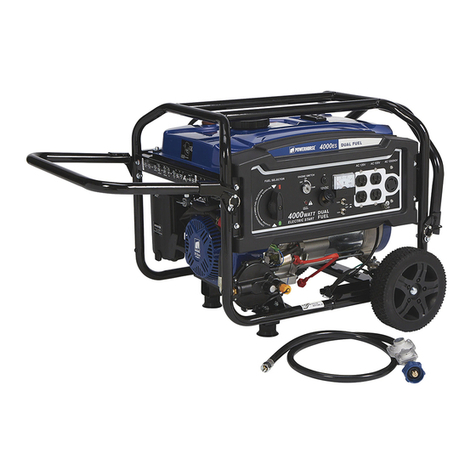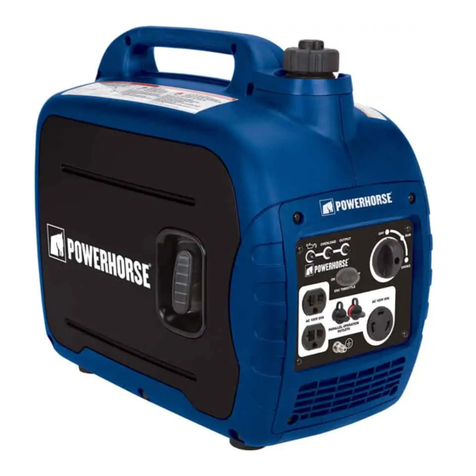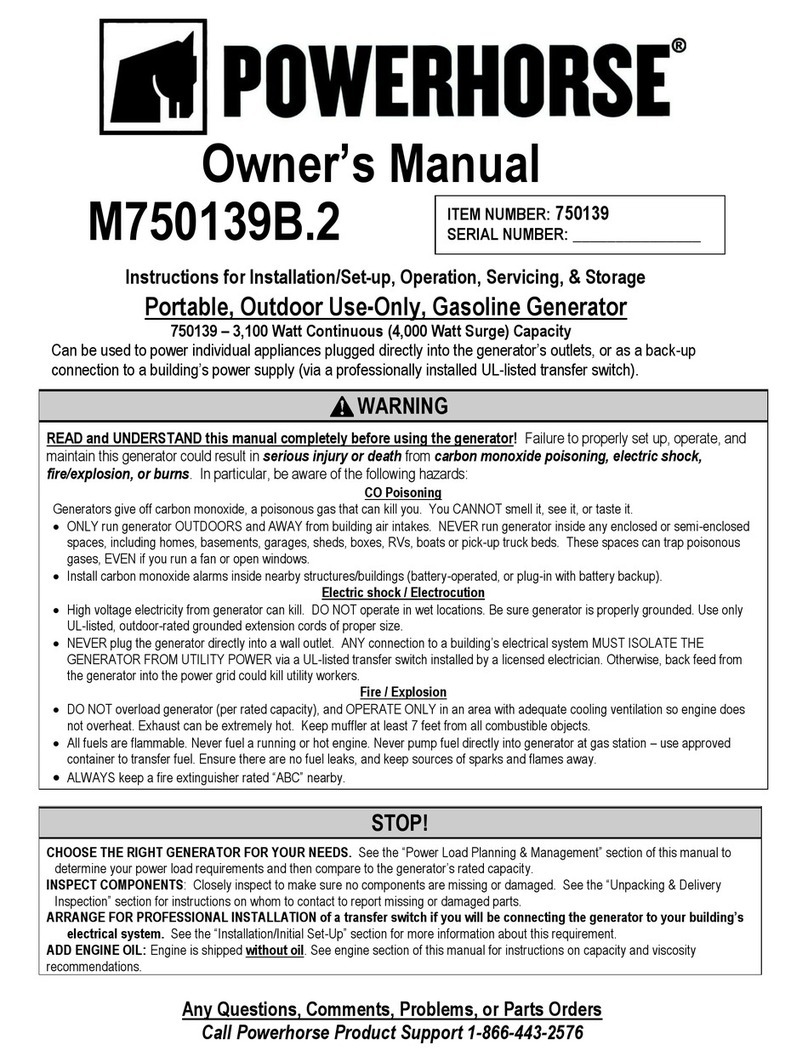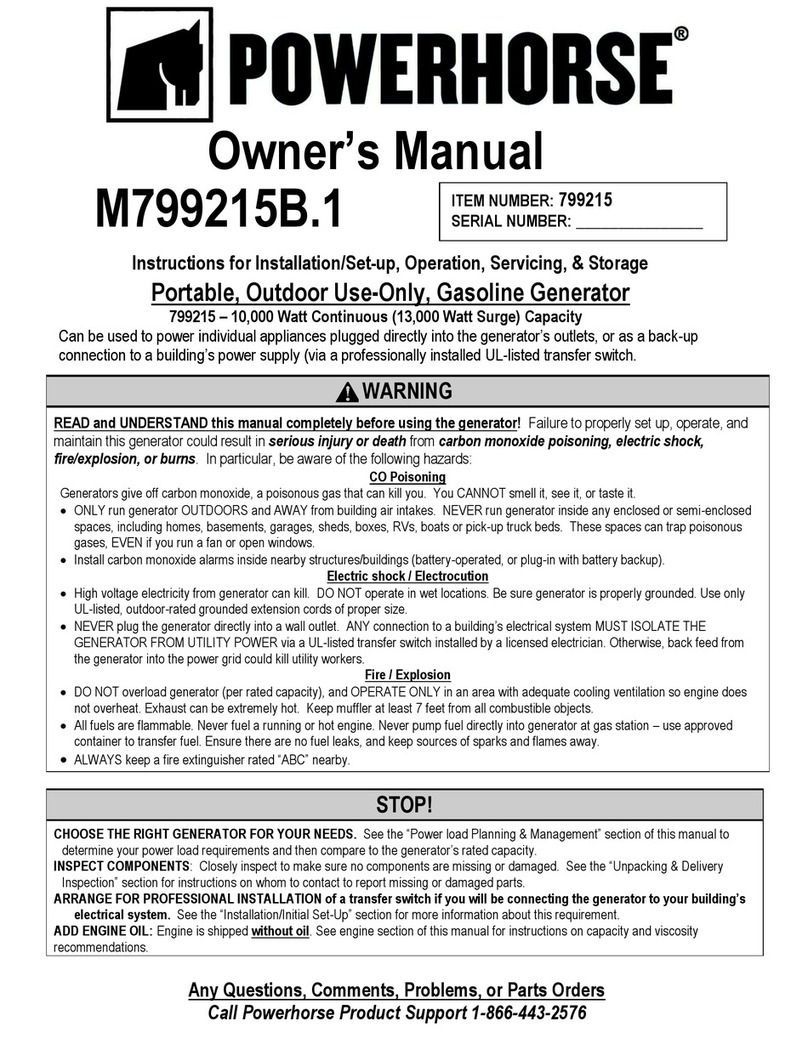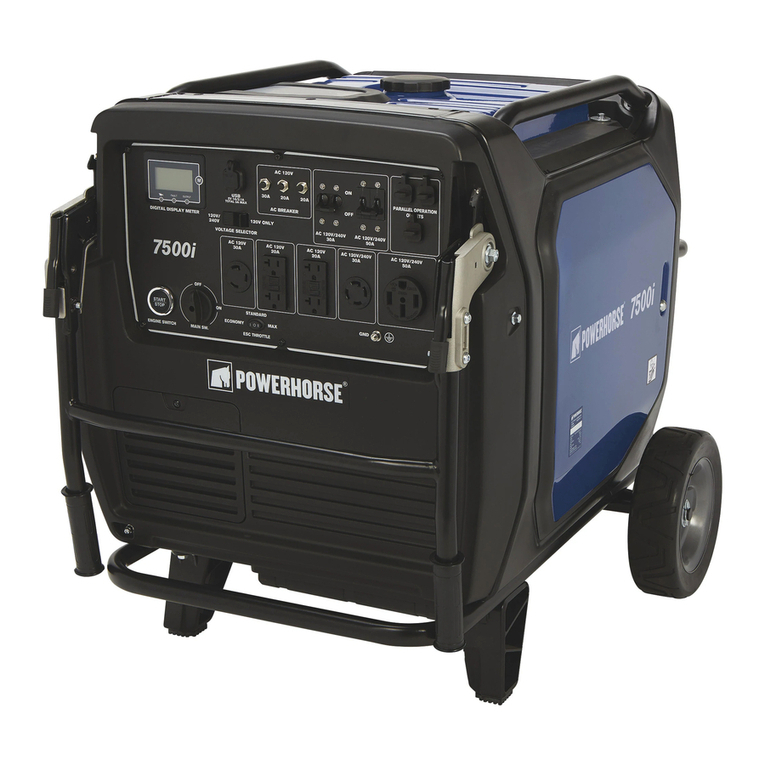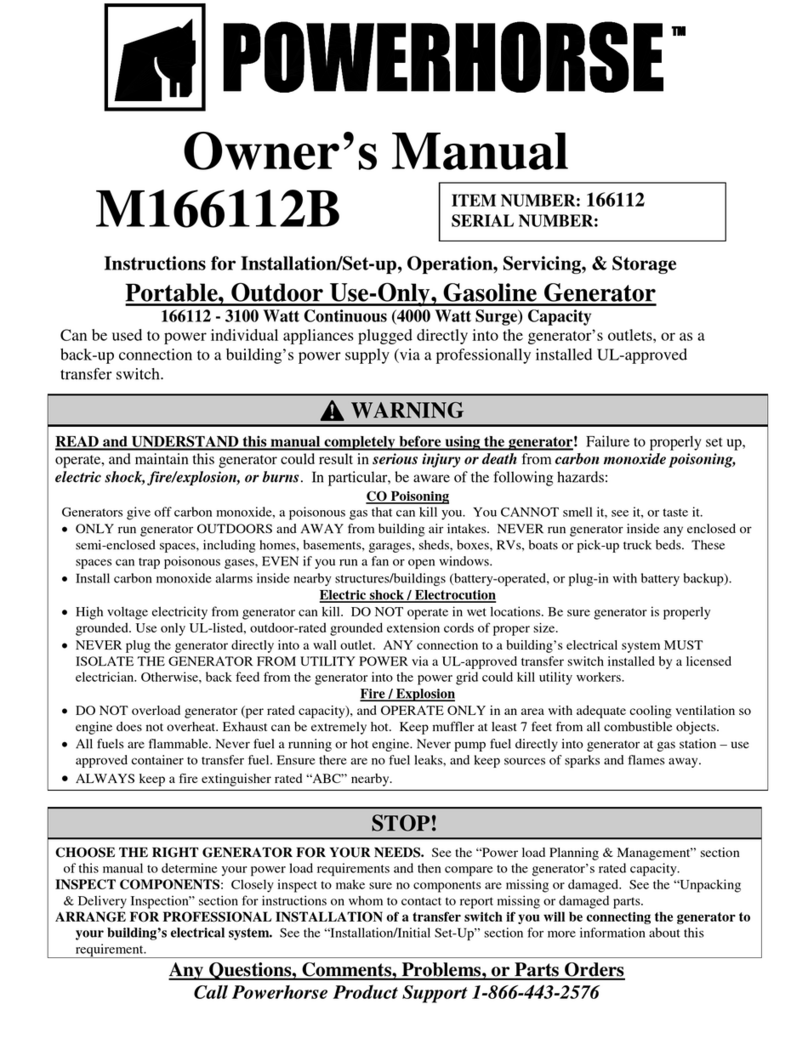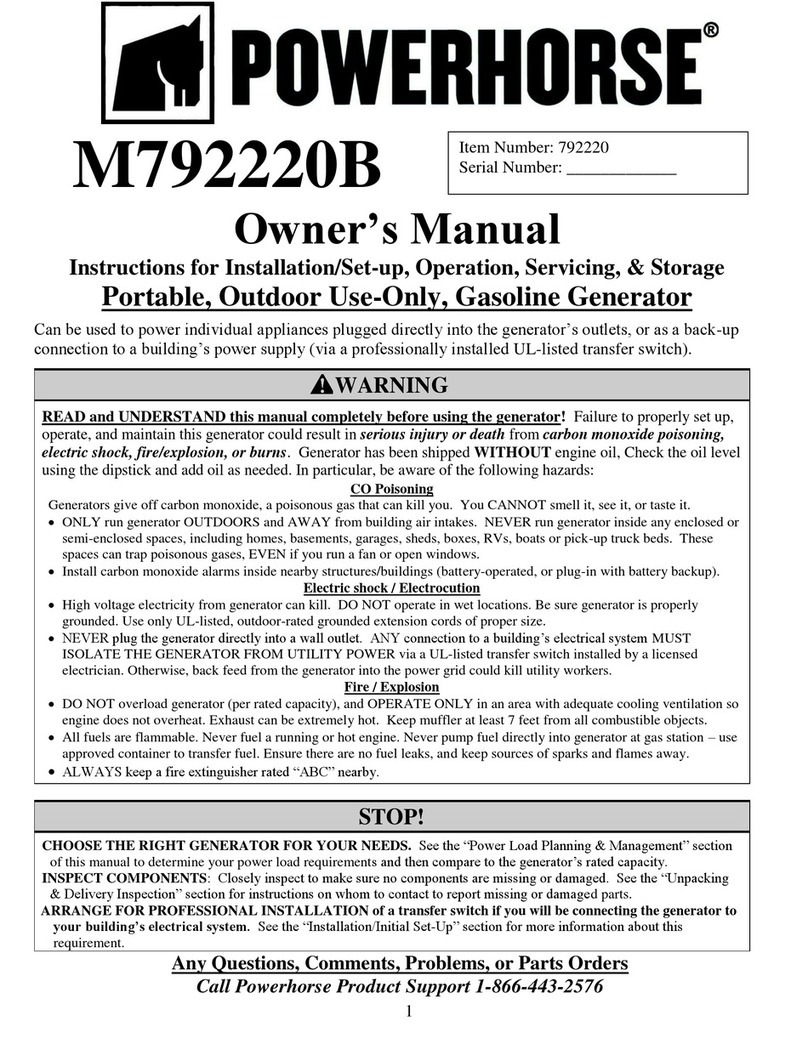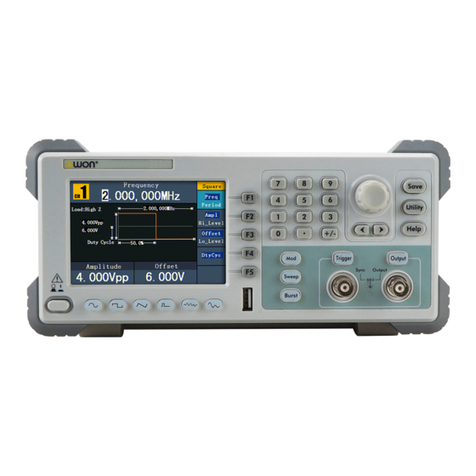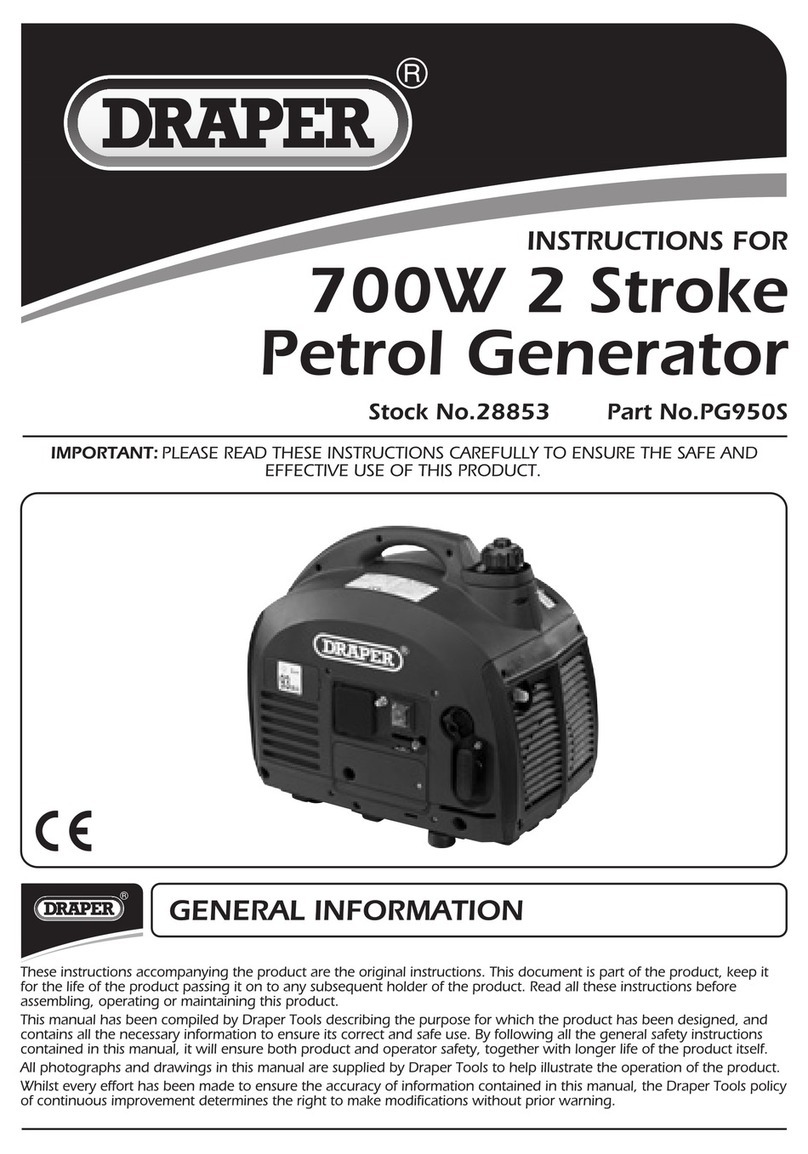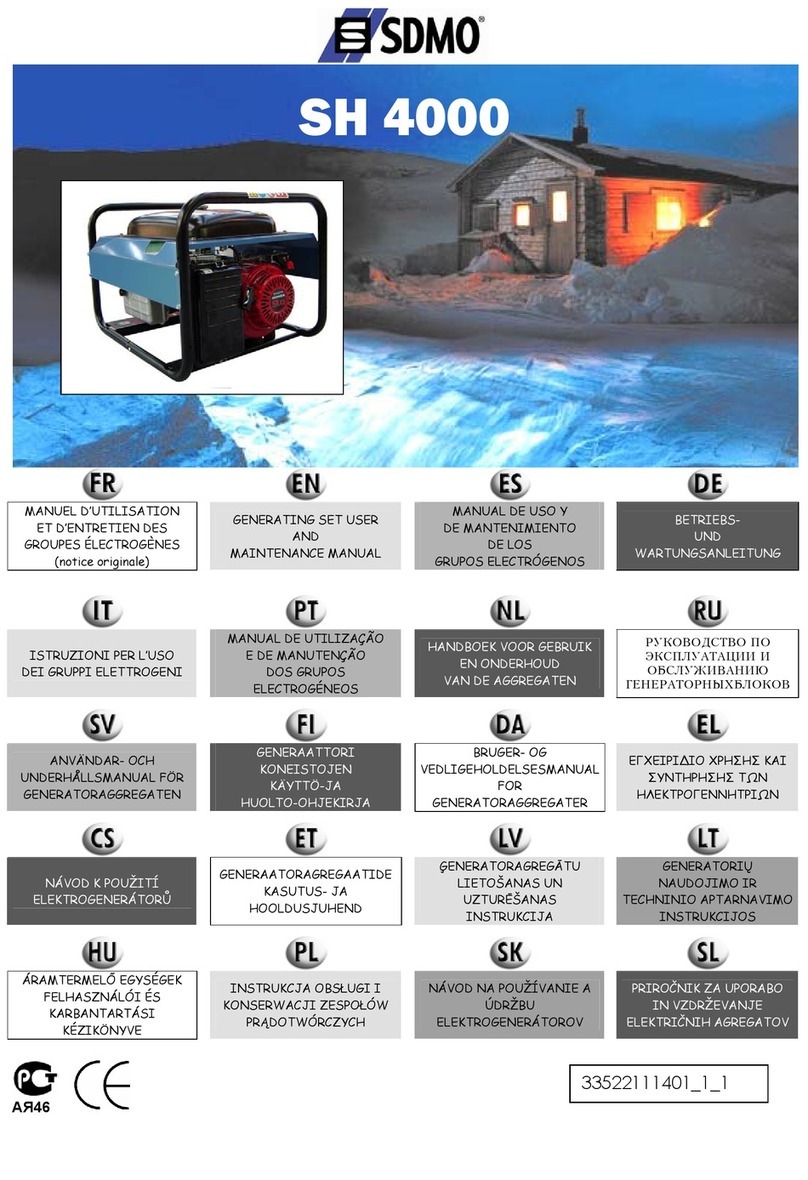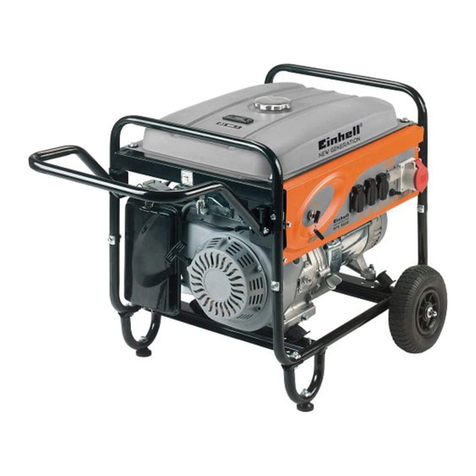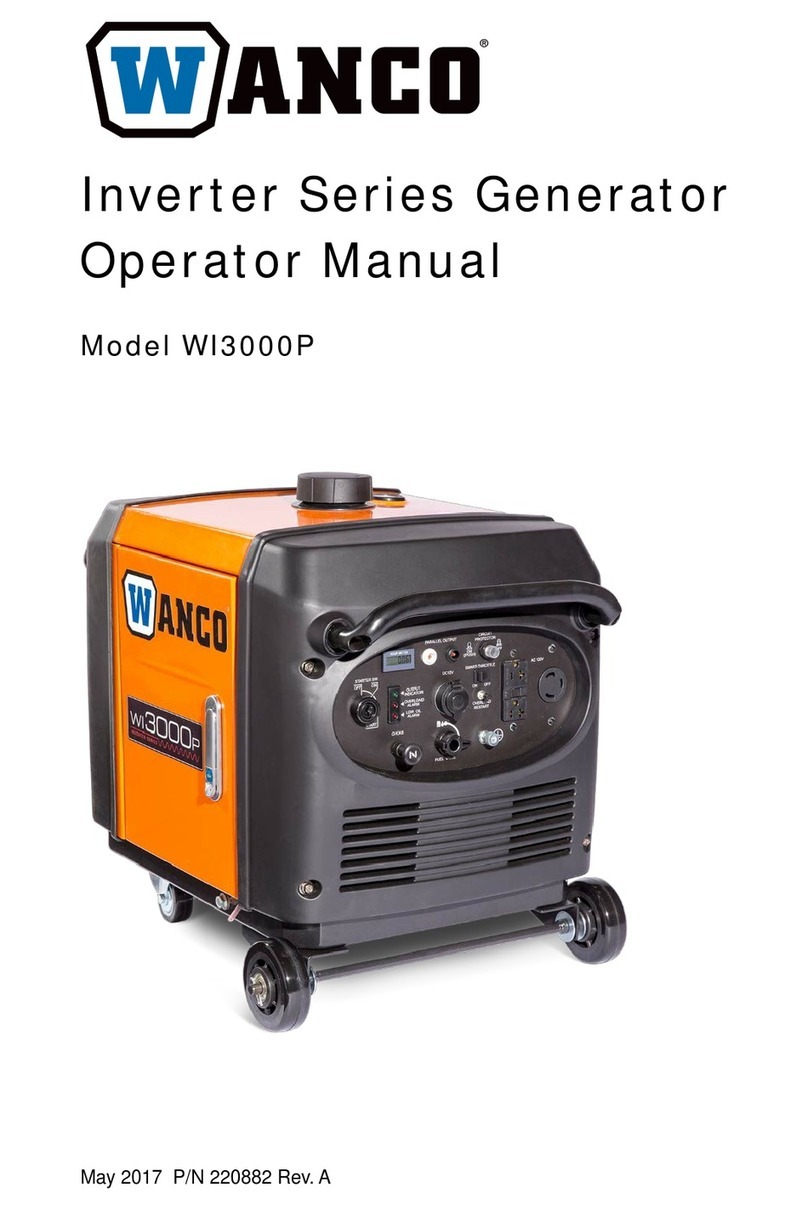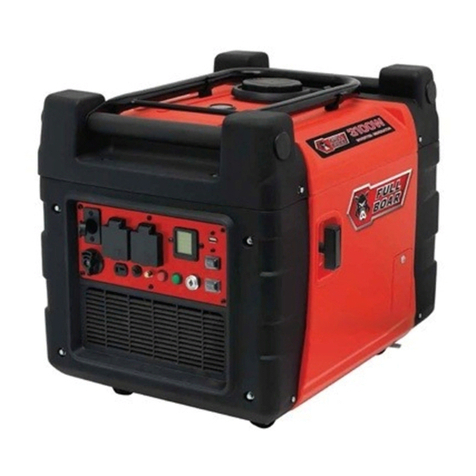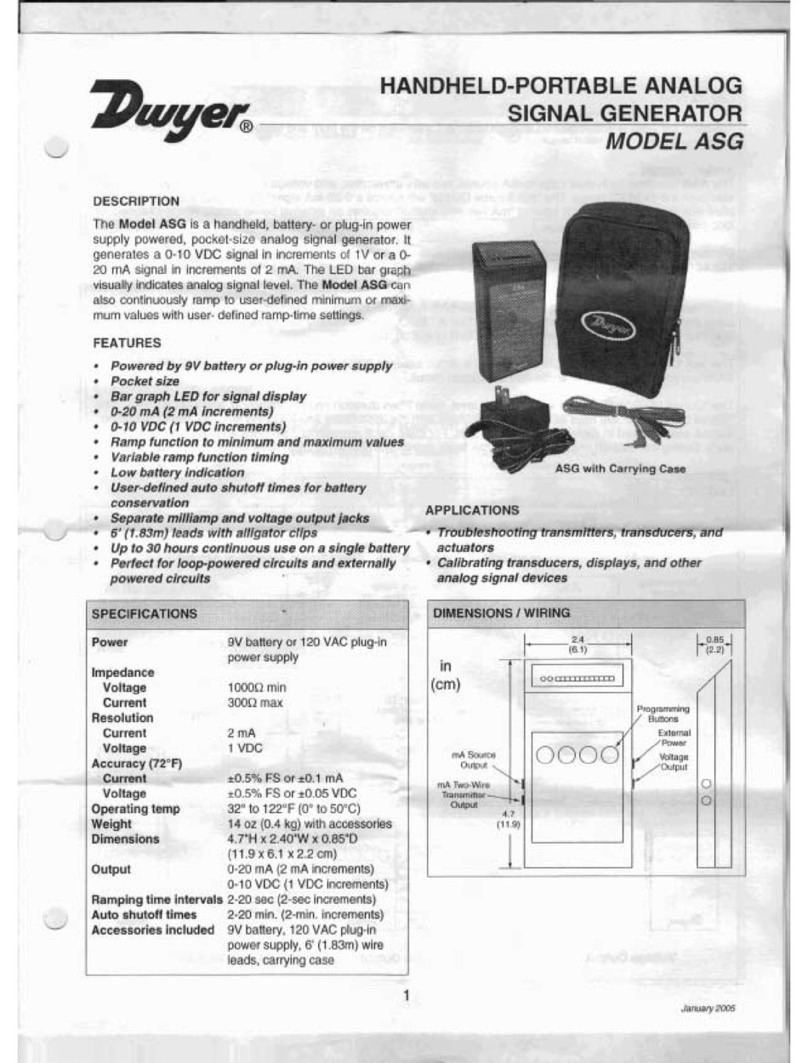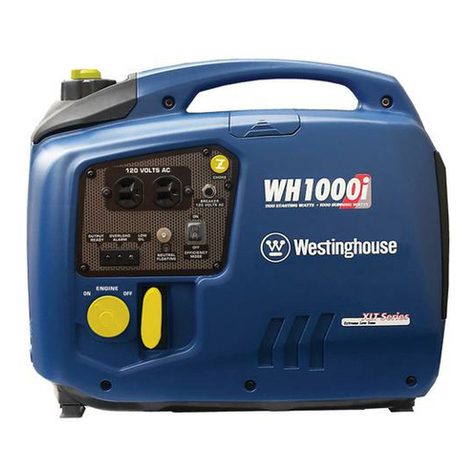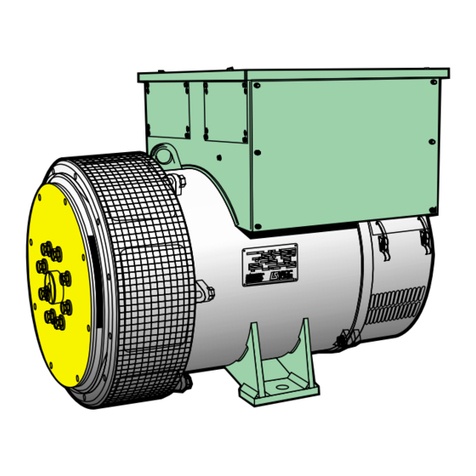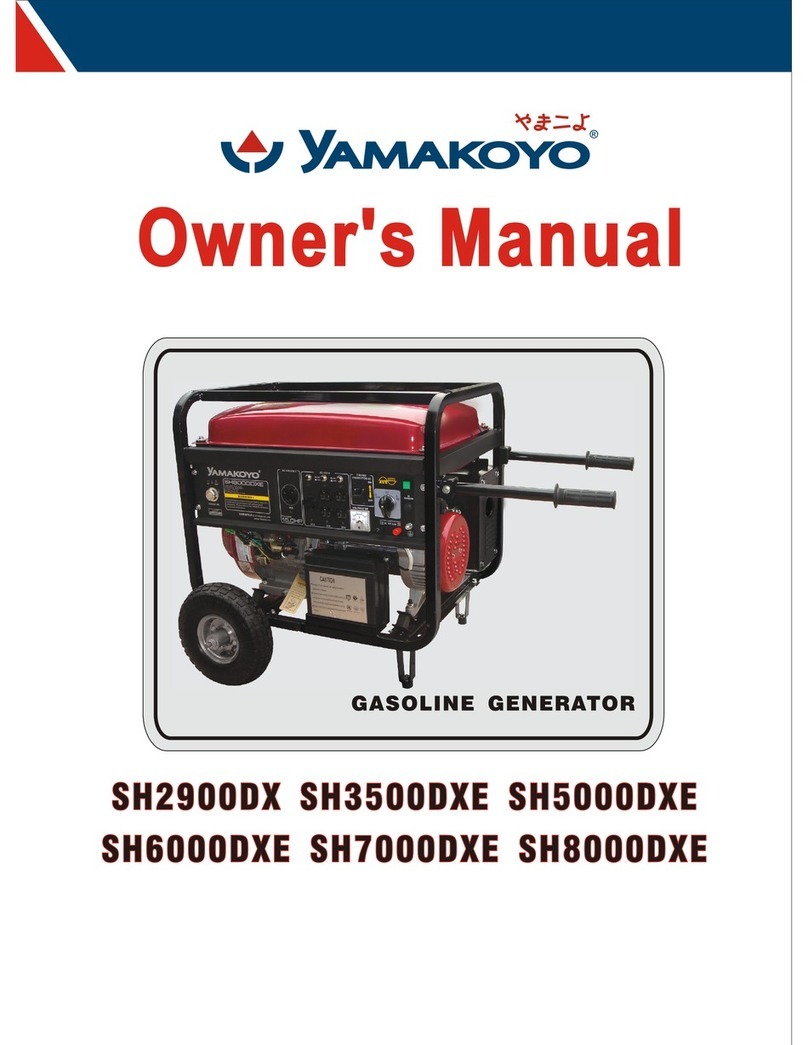Table of Contents
3
Hazard Signal Word Definitions ...................................................................................................2
About Your Generator ...................................................................................................................4
Specifications ...................................................................................................................................6
Safety Label Locations....................................................................................................................7
Machine Component Identification...............................................................................................9
Power Load Planning & Management..........................................................................................11
Installation / Initial Set-Up:
1. Unpacking & Delivery Inspection.......................................................................................... 14
2. Planning the Power Load........................................................................................................ 14
3. Set-up either as a BUILDING BACK-UP or PORTABLE Power Source ............................ 15
4. Selecting a Suitable Site......................................................................................................... 18
5. Grounding the Generator........................................................................................................ 20
Operation:
1. General Safety Rules for Operation ....................................................................................... 21
2. Preparing for Operation.......................................................................................................... 24
3. Starting the Generator............................................................................................................. 29
4. Checking Generator Output.................................................................................................... 31
5. Connecting Loads................................................................................................................... 32
6. Stopping the Engine ............................................................................................................... 32
7. AC Parallel Operation ............................................................................................................ 33
8. Storage & Exercise................................................................................................................. 35
Maintenance & Repair.................................................................................................................. 37
Troubleshooting............................................................................................................................. 47
Summary of Important Safety Information for Operation....................................................... 48
Generator Exploded View ............................................................................................................ 52
Generator Kit Exploded View...................................................................................................... 54
Limited Warranty ......................................................................................................................... 63
California Proposition 65 Information........................................................................................ 64






